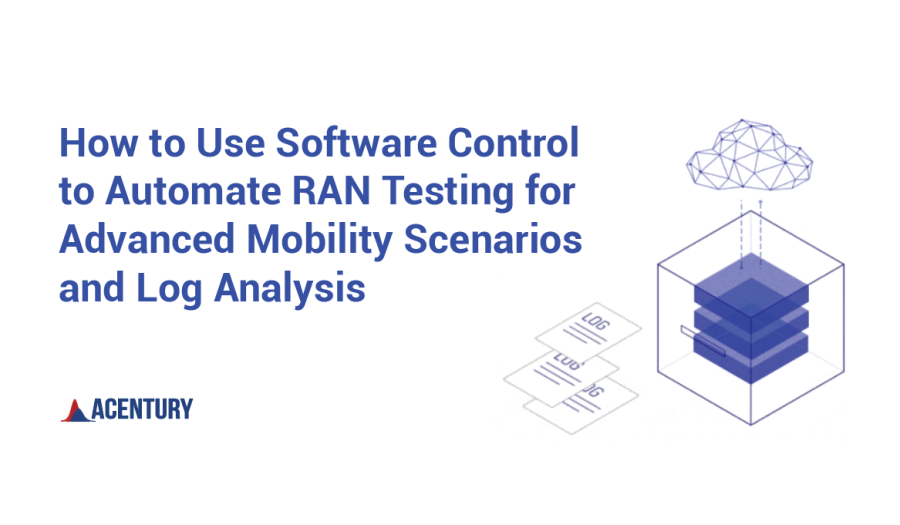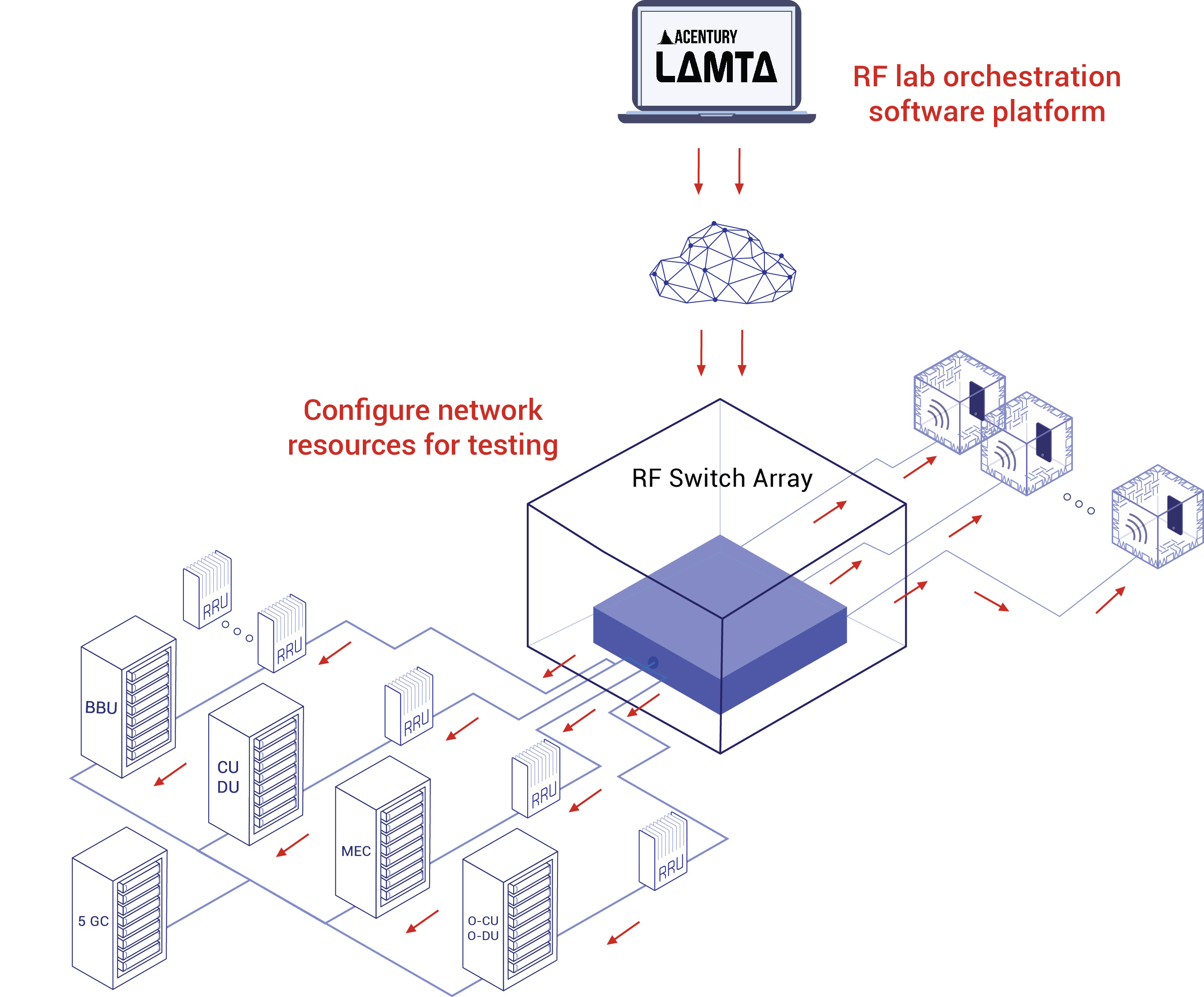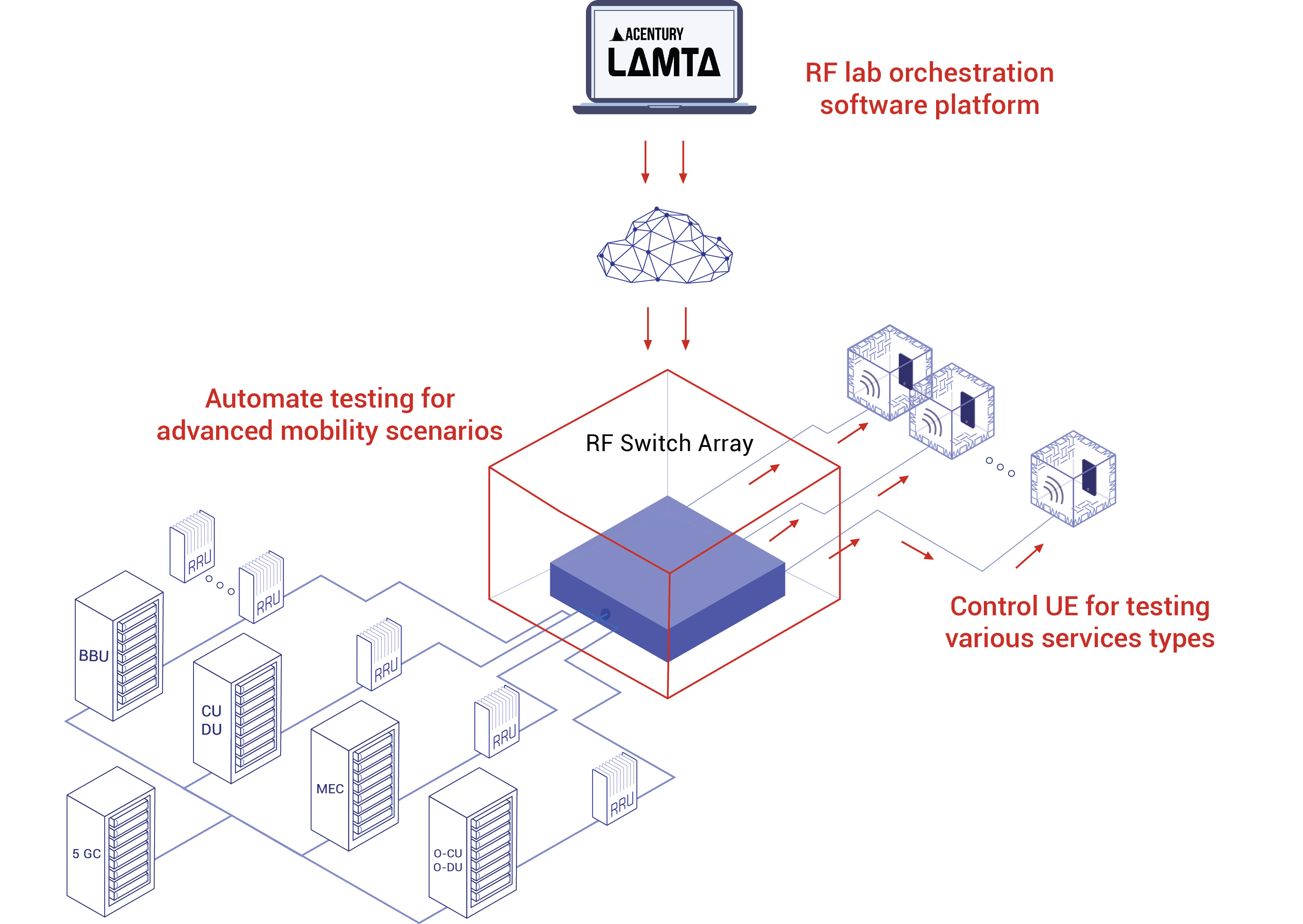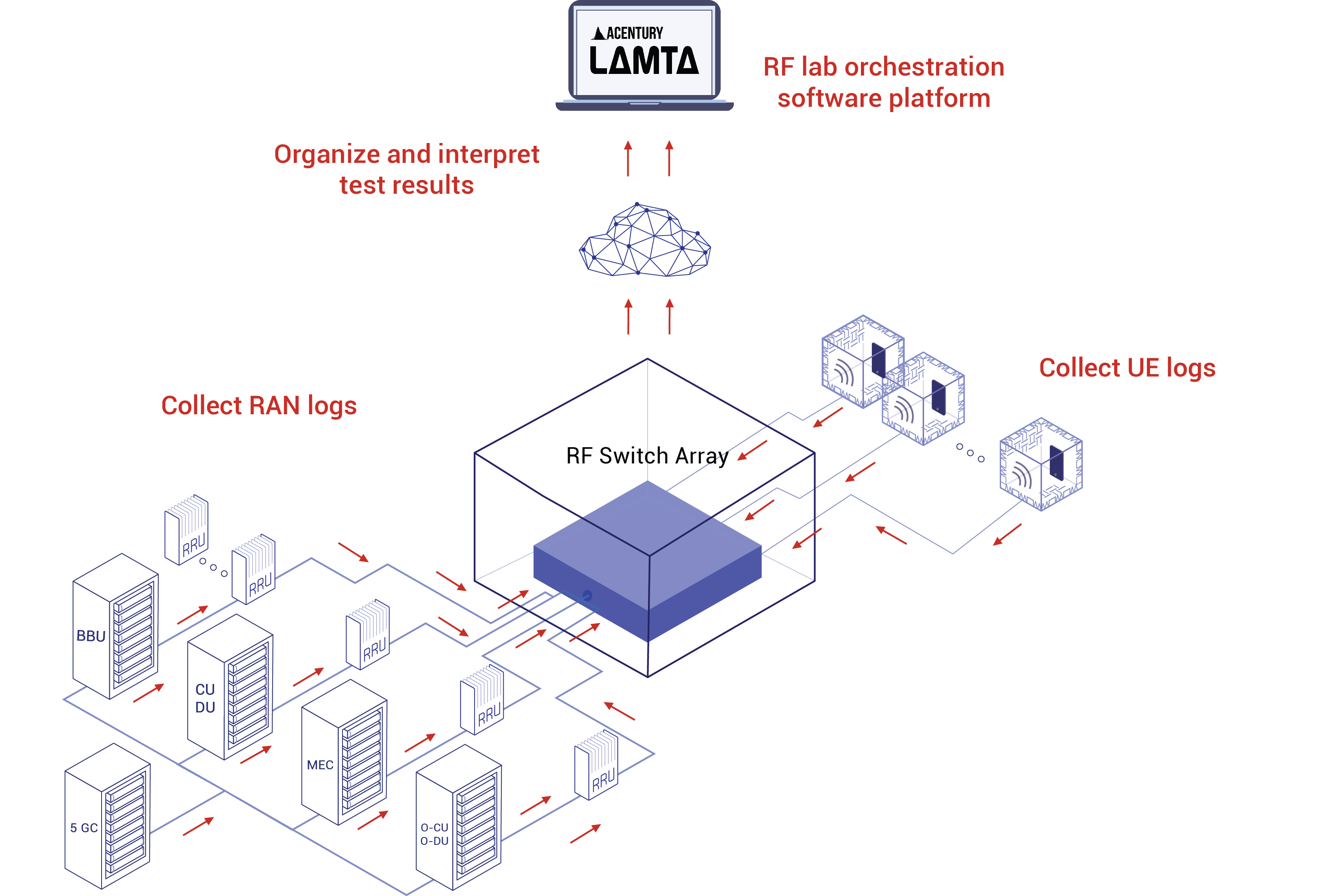
How to Use Software Control to Automate RAN Testing for Advanced Mobility Scenarios and Log Analysis
In this blog post we review how an RF lab orchestration software platform can help setup and facilitate test automation tasks. In this example we're showing the 5G core, higher levels of RAN, the CU/DU splits, the RRUs, and the devices under test, but any equipment with an API can be included.

The RAN is configured just like the production network and the DUTs are set up to make different test points like call types, voice messaging and video data messaging, etc. If there are already testing automation solutions present, the orchestration system integrates them in the overall process as well.
Next the various call types are automatically started on the devices under test, and the RAN equipment will broadcast signals into the RF switch matrix. The orchestration layer controls the RF switch matrix and executes the RF portion of the tests without human involvement. Various call types are made under different RF scenarios like roaming, handover, different orders of MIMO, and carry aggregation, by controlling that RF switch matrix.

Changing which signals are combined together duplicates carry aggregation and MIMO, and changing the attenuation of the signal paths mimics handover between sites. Because the switch matrix is under software control, it can manipulate many RF signal paths independently all at the same time. Trying to perform a 4x4 MIMO test with three carrier aggregation using manually controlled rotary attenuators would be exceedingly difficult to execute. It's certainly not possible to do it the same way twice. Using a software-controlled RF switch matrix enables more sophisticated testing that can be executed quickly and repeatedly as many times as necessary.
Finally, the orchestration layer collects logs from each element of the system for review. It also organizes and interprets them against predetermined pass-fail criteria and presents the results for review by the testers.

With a mirror lab architecture to help orchestrate and replicate the mobile production network, additional capabilities are enabled, and expensive testing labour resources are free from the mundane and manual tasks of routing RF patch cables and reading log files.
To learn more about how the overall LAMTA architecture and how this could be used to construct a mirror lab, click here
Contact us if you have any further questions by reaching out to us HERE
Related Articles
How to Use Software Control to Automate RAN Testing for Advanced Mobility Scenarios and Log Analysis
Part 2: How CI/CD methodologies can be applied to 5G RAN Testing and Deployment
Have a question or comment?
We'd love to hear it. Fill out our General Inquiry Form or reach us directly at: info@acentury.co
CONTACT US